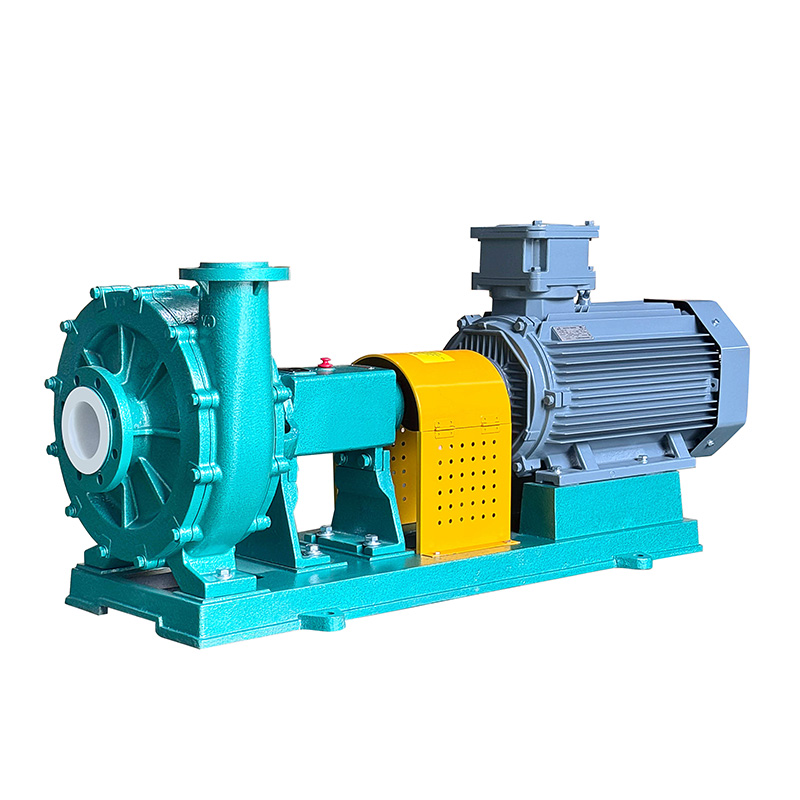Apr 01, 2025
After working in the industry for many years, many companies still confuse mortar pumps and slurry pumps. They think these pumps are the same equipment used to transport coarse-grained materials, just with different names.
But is there really not much difference between mortar pumps and slurry pumps? Far from it. Such inquiries often reveal critical technical knowledge gaps in industrial applications.
1. The Difference between mortar pumps and slurry pumps 1: Material composition
Mortar pump:
Wear-resistant material: ultra-high molecular weight polyethylene (UHMWPE)
Molecular chain is 10 times longer than standard polyethylene
Corrosion resistance reaches the highest standard of ASTM G65
Applicable to extreme media (pH 1-14), such as desulfurization slurry, hydrochloric acid solution
Rely on the elastic deformation of polymer materials to buffer wear
Temperature range: -50℃ to 80℃
Slurry pump:
Wear-resistant material: high chromium alloy (Cr26-28%)
Hardness: HRC 60-65
Resistant to particle impact ≥7 Mohs hardness
Flow channel width: 1.5 times wider than mortar pump
Can accommodate solids with a diameter of ≤50mm
Rely on metal hardness to achieve direct wear resistance
Temperature resistance: up to 150°C
2. The Difference between mortar pumps and slurry pumps 2: Design principle
Mortar pump: uses mechanical drive (compressed air starts the piston/impeller) to accurately transport mortar and other mixtures to the construction site.
slurry pump: Using centrifugal pump technology, it can quickly separate and efficiently transport mud containing solid impurities.
3. The Difference between mortar pumps and slurry pumps 3: Application scenario
3.1. Mortar pump
Applicable to low viscosity, small particle materials:
Corrosive media: acid/alkaline liquid, smelting slurry, dilute sulfuric acid, wastewater
Particle limit: diameter ≤2mm, concentration ≤30%
Typical use:
Desulfurization system circulating slurry (pH 2-5, particles ≤ 0.5mm)
Chemical corrosion-resistant transportation (such as hydrofluoric acid, chlor-alkali solution)
Building mortar spraying (cement particles ≤ 0.5mm)
3.2. slurry pump
Handling high-viscosity media containing large solids:
Non-corrosive slurry: ore dressing slurry, sand and gravel mixture, sludge
Particle limit: diameter ≤ 50mm, concentration ≤ 60%
Typical uses:
Mine tailings transportation (iron slag: 10-30mm particles)
Coal washing plant sludge (coal gangue hardness ≥ 6 Mohs)
River dredging (sand and gravel mixture with 40% solid content)
4. The Difference between mortar pumps and slurry pumps 4: Performance characteristics
As shown in the figure above, the performance difference between mortar pumps and slurry pumps is very obvious:
Mortar pump: high head, large flow, corrosion resistance-optimized for corrosive environments.
Mud pump: sturdy structure, stable operation under extreme wear conditions-the first choice for high wear environments.
Through comprehensive comparison, The Difference between mortar pumps and slurry pumps is clear at a glance. If you need further help in selecting industrial pumps, please feel free to contact Changyu Pumps and Valves. Our team is always ready to answer your questions with expertise and enthusiasm.
Read More
